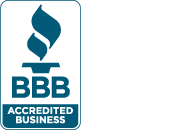What Are Conflicts Of Interest Form?
On a day to day basis I have dealings with a variety of nonprofit organizations, and have
discovered one pressing issue that seems to be faced by all organizations, startup and established, big and small—conflicts of interest. Because conflicts of interest can be a serious threat to both an organization’s reputation and their exempt status, administrators must be diligent in avoiding and addressing potential conflicts. The key for nonprofit boards is not to try to avoid all possible conflict-of-interest situations, but to identify and follow a process for handling them effectively. How an organization manages conflicts of interest and assures open and honest deliberation affects all aspects of its operations and is critical to making good decisions, avoiding legal problems and public scandals, and remaining focused on the organization’s mission.
The nonprofit sector depends on the spirit of volunteerism displayed by board members’ personal and professional knowledge, experience, and community engagement. These board members can, however, face challenges in carrying out their board responsibilities because of the number and breadth of associations and connections they have. Therefore, nonprofit board members and executives must not only be able to recognize potential conflicts of interest, but they must determine when these conflicts present areas of concern and what to do about them.
While most people say they understand the conflict of interest, most people cannot articulate a clear and general statement. They may be able to give extreme examples but cannot identify potential conflict in more mundane circumstances. A useful way of looking at the conflict of interest is to turn it around and say that directors should avoid any self-serving conduct. If it benefits the director then the action is suspect. Most theorists allow that if the action benefits everyone in the community then it is not self-serving.
In order to help the board of directors understand and avoid conflicts of interest, the board should develop or adopt a written expression of its intentions. Board members should remember that a written code serves as a guideline. It cannot replace careful consideration and an ethical approach. Each member of the Board should be required to acknowledge acceptance of the policy on an annual basis, and the policy should be reviewed at the initiation of all Board meetings. Finally, keep these things in mind to help you assure that your organization does not face a potential conflict:
- Full Disclosure to the board – Since when most conflict situations arise only a couple of people in an organization know, full disclosure can establish good faith among boards.
- Distancing Oneself From Potential Conflicts – A Board member should excuse himself from portions of the meeting that may lead to any potential conflict, in addition to abstaining from voting on matters that may pose a conflict.
- Best Interests In the Forefront – Create an arrangement that decides without ones’ involvement in certain discussions, that the best interests of the organization, not that board member, will be emphasized.
- Compensation – If a board member is compensated in any way by a nonprofit, make sure their pay is either fair market value or less, a common mistake among boards.
DO YOU NEED TO KNOW MORE ABOUT 501C3 NON-PROFIT SERVICES?
For more information on CharityNet USA and their innovative nonprofit services, please visit our 501c3 tax-exempt webpage or call 877-857-9002.
WANTING TO READ MORE ABOUT FOUNDATIONS AND CHARITABLE NON PROFIT 501C3 TAX EXEMPT FORM, GO TO OUR PRIOR BLOG TO LEARN MORE ABOUT 501(C)(3) FOUNDATIONS.


